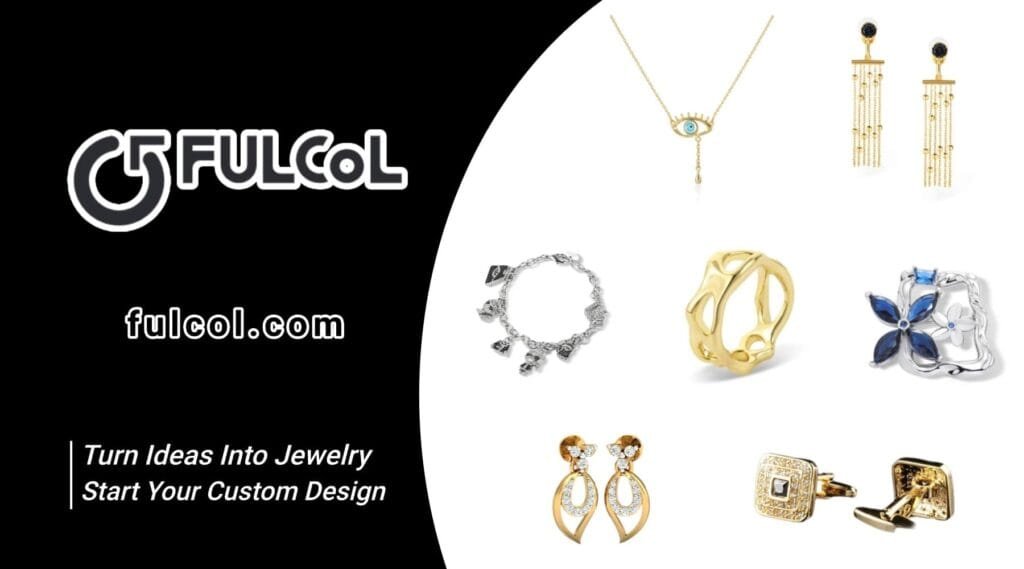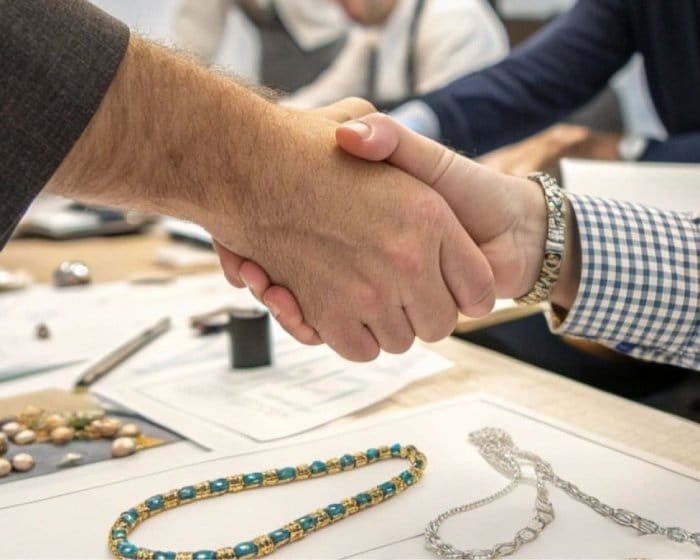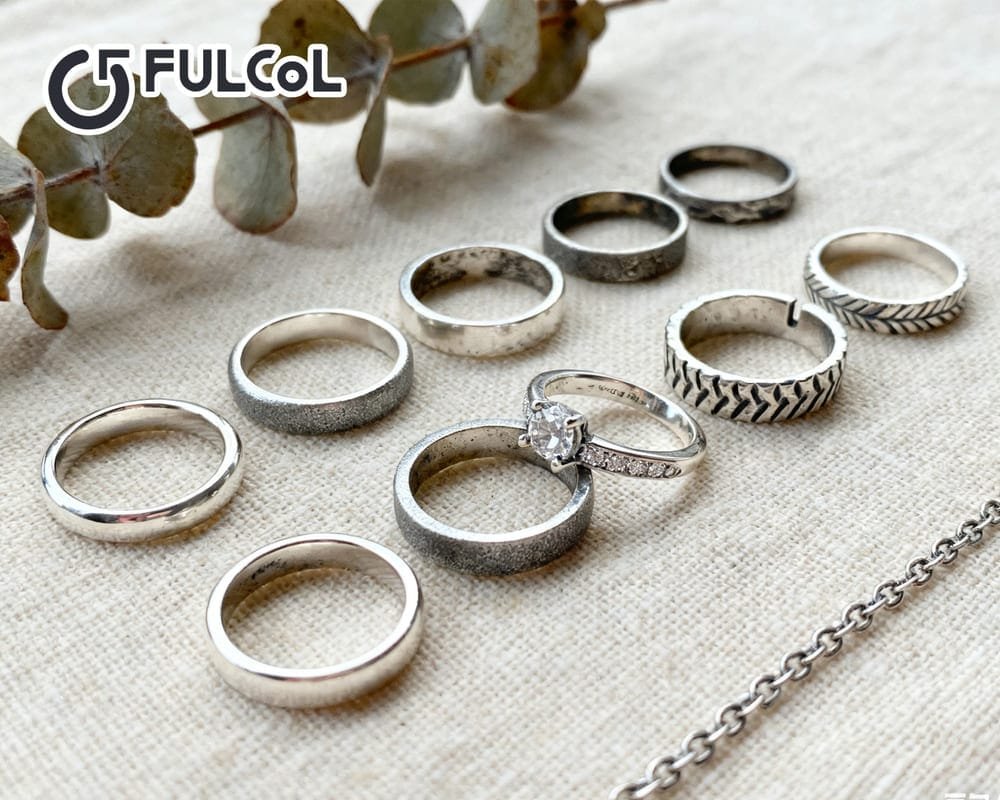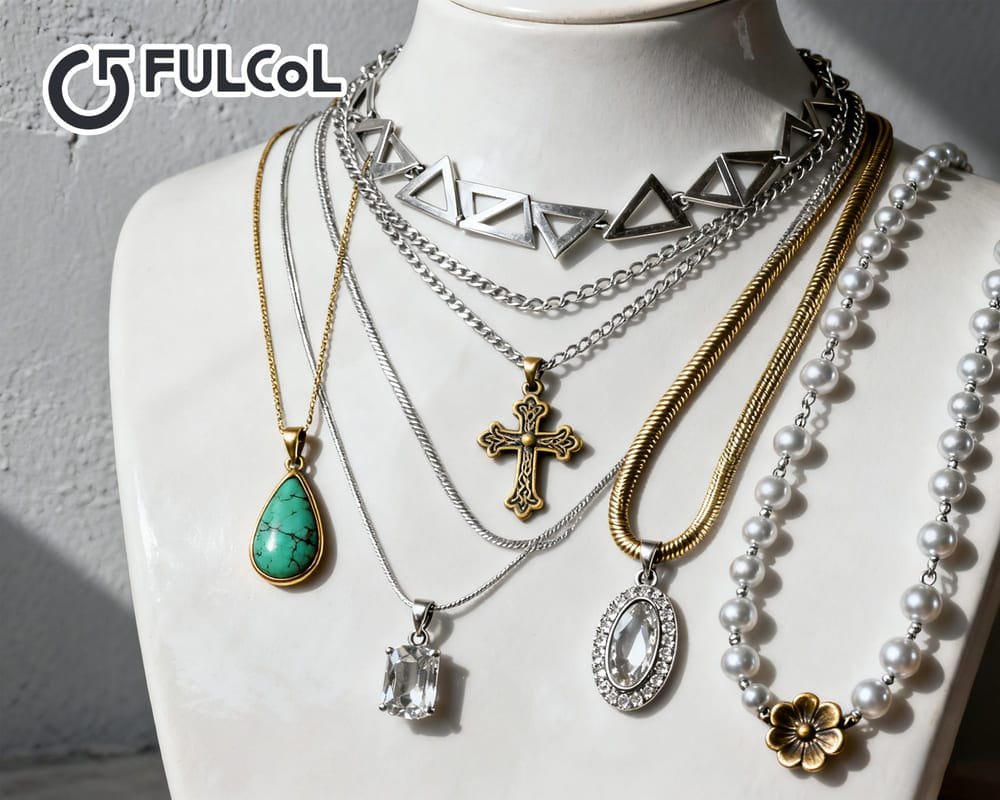In today’s era of pursuing personalization and unique aesthetics, customized jewelry is no longer exclusive to a few people, but an important way for more and more consumers to express themselves and gather emotions. Whether it is an engagement ring as a milestone in life, a commemorative necklace given to close friends, or an exclusive bracelet that highlights personal style, customized jewelry can integrate the definition of “beauty” with the wearer’s story. However, faced with a wide range of material choices – K gold, silver jewelry, brass. Various crafts – 3D printing, hand forging, polishing and electroplating. There are countless design details, and consumers who place orders for the first time often feel confused: “Where should I start? What key questions should I ask the supplier to save both worry and money and get the ideal finished product?”
Fulcol custom design jewelry manufacturers explains in detail the 7 core questions that must be asked before placing an order, and provides practical suggestions including tools, operating steps, contract terms demonstrations, etc., to help you complete the entire process of design, quotation, production, delivery, after-sales, etc. at one time, and truly achieve “customization without worry”.
Table of contents
- Understand your needs: clarify the type and style of jewelry customization
- Comparison of materials and craftsmanship: Customization guide
- Budget and quotation: How to formulate and communicate costs in depth with manufacturers
- Key to design communication: Discuss the details of customized jewelry with the designer
- Gem selection and identification: ensure the quality of jewelry customization
- Size measurement: ensure that the custom jewelry is comfortable to wear
- Production cycle and delivery: subject to manufacturer schedule and order details
Understand your needs: clarify the type and style of jewelry customization
Before communicating with suppliers, you must first comprehensively sort out your needs so that you can efficiently reach an agreement in the subsequent steps.
What jewelry style do I want?
Classic simplicity VS retro elegance VS contemporary avant-garde
- Classic simplicity: mainly geometric lines and refined details, suitable for daily commuting and workplace matching.
- Retro elegance: Incorporating elements of the Baroque and Victorian periods, common hollow patterns and delicate curls.
- Contemporary avant-garde: boldly use asymmetry and mixed material splicing, often with colored gems or innovative craftsmanship.
Operation suggestions
- You can search for three style keywords on the Internet and collect at least 30 pictures.
- Classify the images by color, element, and atmosphere, and mark “the three most favorite points” next to each picture: such as “slim ring face lines”, “grooved gemstones”, and “frosted metal surface effect”.
Practical tips
- When communicating with designers, directly share your link or PDF to let the other party understand your aesthetics at the first time.
- If it is a pair of jewelry (such as couple rings, mother-daughter bracelets), you can make two pictures respectively, and mark the two types of needs, “same elements” and “differentiated customization”, to avoid style confusion.
What occasions will this jewelry be used for?
Daily wear VS important ceremony VS investment collection
- Daily wear: focus on comfort and durability, it is recommended to choose a solid structure or strengthen the welding points.
- Important ceremonies (weddings, anniversaries): pay more attention to design and symbolic meaning, and you can incorporate customized elements such as engraving and family crests into the shape.
- Investment collection: combine materials (such as high-carat K gold or high-end gems) with craftsmanship (3D printing, hand-inlaid) to maintain and increase value.
Actionable steps
- Make a list of wearing scenarios (such as commuting, dinner parties, vacation photos, etc.).
- For each scenario, mark “essential functions” (anti-allergy, anti-fading, easy to clean, etc.). .
- Match the list with Mood Board to select the design direction that best meets your needs.
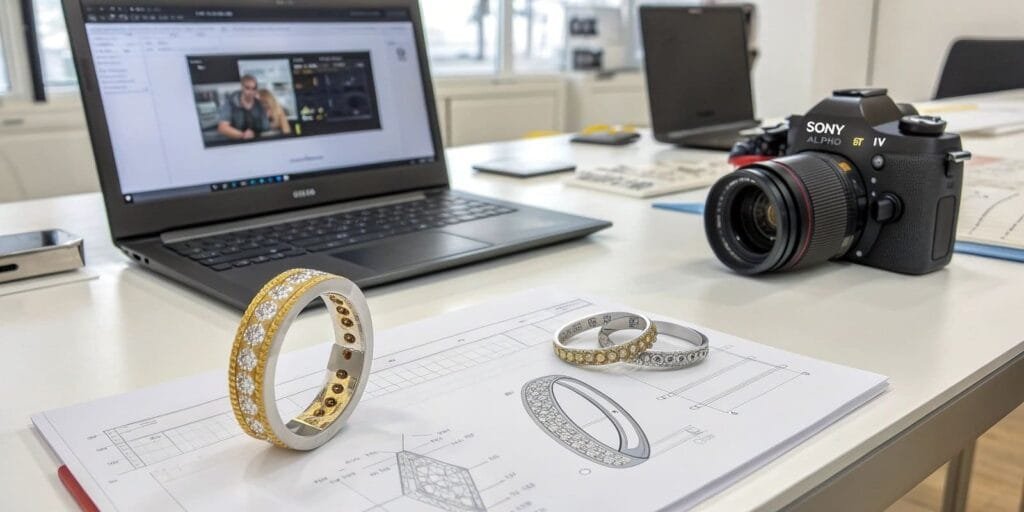
Comparison of materials and craftsmanship: Customization guide
The material directly determines the appearance, feel, price and value retention of the finished product. The following is an in-depth comparison of the three most common materials.
Which material best meets my budget and durability needs?
K-gold customization
- Composition: Taking 18K Gold as an example, the gold content is 75%, and the rest is copper, silver and other alloys, which have both the luster of gold and the hardness of alloys.
- Advantages: Strong resistance to scratches and deformation, not easy to change color; more durable color; high value retention.
- Disadvantages: High cost, the unit price is usually about 5-8 times that of pure silver.
Silver customization
- Composition: The most common is 925 Sterling Silver, with a silver content of 92.5%, and the rest is copper and other metals.
- Advantages: Affordable price, easy to process fine patterns; natural silver jewelry has a warm luster.
- Disadvantages: Easy to oxidize and blacken, need to be cleaned regularly; some wearers will have a slight allergic reaction.
Brass customization
- Composition: copper and zinc alloy, the lowest cost.
- Advantages: The color is close to bronze, suitable for retro or industrial style design.
- Disadvantages: It is easy to oxidize and produce green rust, and needs regular waxing or electroplating protection.
Suggestions
- If the primary concern is “durable appearance and value retention”, give priority to 18K/14K K gold.
- If you focus on “cost control and process diversity”, you can choose 925 silver.
- If the budget is extremely limited or you pursue a special patina, you can choose brass and ask the supplier to add a PVD electroplating protective layer to the outer layer of the finished product.
What are the surface treatment processes? How does it affect the texture of the finished product?
Polishing electroplating
Features: The mirror has a strong reflective effect, and platinum plating (rhodium plating) can increase oxidation resistance.
Maintenance: The electroplating layer needs to be returned to the factory every 6-12 months.
Matte/Sandblasting
Features: Rough and slightly matte surface, strong modern feel.
Maintenance: Good wear resistance, but avoid scratches with sharp objects, otherwise it will leave marks.
Brushed Finish
Features: The metal surface has fine parallel textures, which is wear-resistant and invisible.
Maintenance: You can repair it yourself with ultra-fine sandpaper or smear.
PVD Vacuum Coating
Features: The film layer is thinner and harder, and the color can be diversified (black titanium, bronze, rose gold, etc.).
Maintenance: Extremely wear-resistant, can reach the 3000-hour salt spray test standard.
Suggestions
- Specify the processing technology terms and international standards (such as ISO 4527 mirror polishing grade) in the contract.
- Require suppliers to provide at least 3 kinds of physical samples or sample drawings of the process.
- Before purchasing, you can go to a local jewelry store to compare the finished products of different processes and feel the difference by hand.
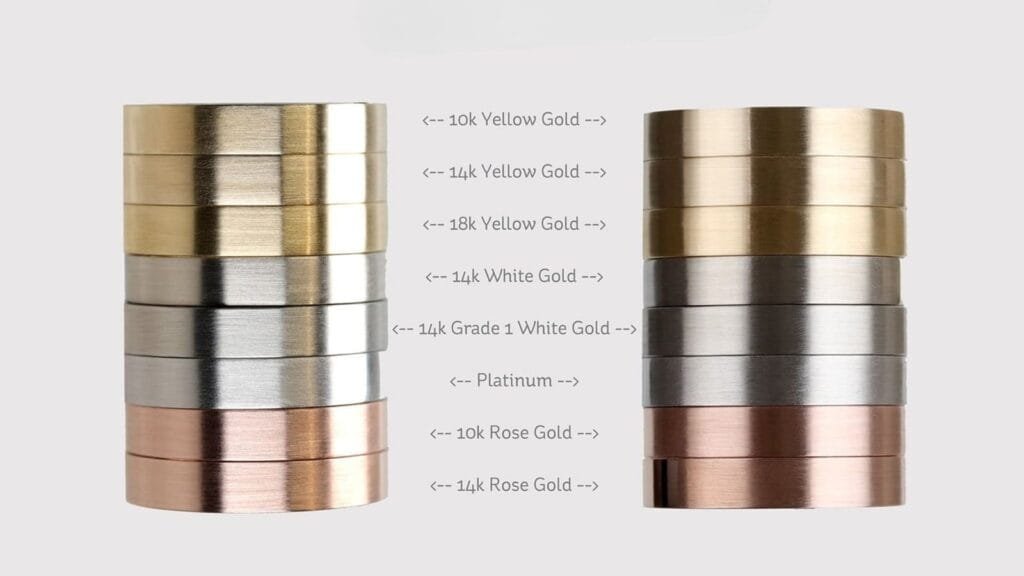
Budget and quotation: How to formulate and communicate costs in depth with manufacturers
An accurate budget is not about memorizing a string of fixed numbers, but about understanding the quotation structure and pricing logic of each manufacturer, and repeatedly confirming it in combination with the order details.
What items are included in the quotation? How to avoid adding items later?
Material cost: The unit price of metals from different manufacturers will vary depending on the procurement channel, gold content and alloy formula. It is recommended to ask “Under the current gold price and procurement volume, what is the price per gram of 18K, 14K and 925 silver?”
Design fee: Depending on the designer’s qualifications, software used (hand-drawing vs CAD) and manuscript complexity, the quotation varies greatly. Be sure to ask “Are basic sketches, 3D renderings, and proofing charged separately? Can a package discount be given?”
Process fee: The labor cost of processes such as casting, polishing, inlaying, and surface treatment also varies due to the factory’s location and technician level. It is necessary to confirm “What is the standard labor cost for each process? If a different process is changed, how much additional cost is required?”
Management and taxes: Including factory management, quality inspection, packaging and taxes, ask for a list “Please provide the management fee rate and applicable tax rate, and indicate whether it is included in the total price?”
Transportation and insurance: Depends on the place of shipment, logistics method and value insurance setting “What are the reference quotes for regular express, air and sea freight? How to calculate the insurance rate?”
Key to design communication: Discuss the details of customized jewelry with the designer
The design stage is the core stage of customization, and the communication efficiency directly determines the degree of fit between the final product and the expectation.
What is the form and frequency of delivery of the first draft of the design?
Hand-drawn sketch (2D Sketch): Suitable for early creative collision and quick determination of the overall shape.
3D Rendering (3D Render): It can realistically simulate the metal texture, gem facets and light and shadow, and can be used for VR/AR try-on.
Wax proofing (wax model): A real-scale model is made through 3D printing or manual waxing, and it is tried on and photographed for confirmation.
Suggestions
- Require at least two rounds of free modification opportunities: the first round is for “structure and proportion”, and the second round is for “details and finishes”.
- Specify the “first draft delivery time limit” and “modification cycle” in the contract.
- It is recommended to use professional CAD platforms such as RhinoGold and MatrixGold, and retain project files for later modification or reprinting.
How to calculate the number of modifications and fees?
Free number of modifications: generally 2-3 times, including minor structural adjustments and color scheme changes.
Excess modification fee: 100-300 yuan/time will be charged after exceeding the number (depending on the communication results).
Major modification fee: If it involves overall redesign or replacement of main materials, it is necessary to re-quote according to “design fee + labor fee”.
Suggestions
- Before confirming the design contract, confirm the “modification definition” with the supplier – which ones are free and which ones are charged.
- Put forward all modification opinions at one time to avoid multiple scattered feedbacks causing additional costs.
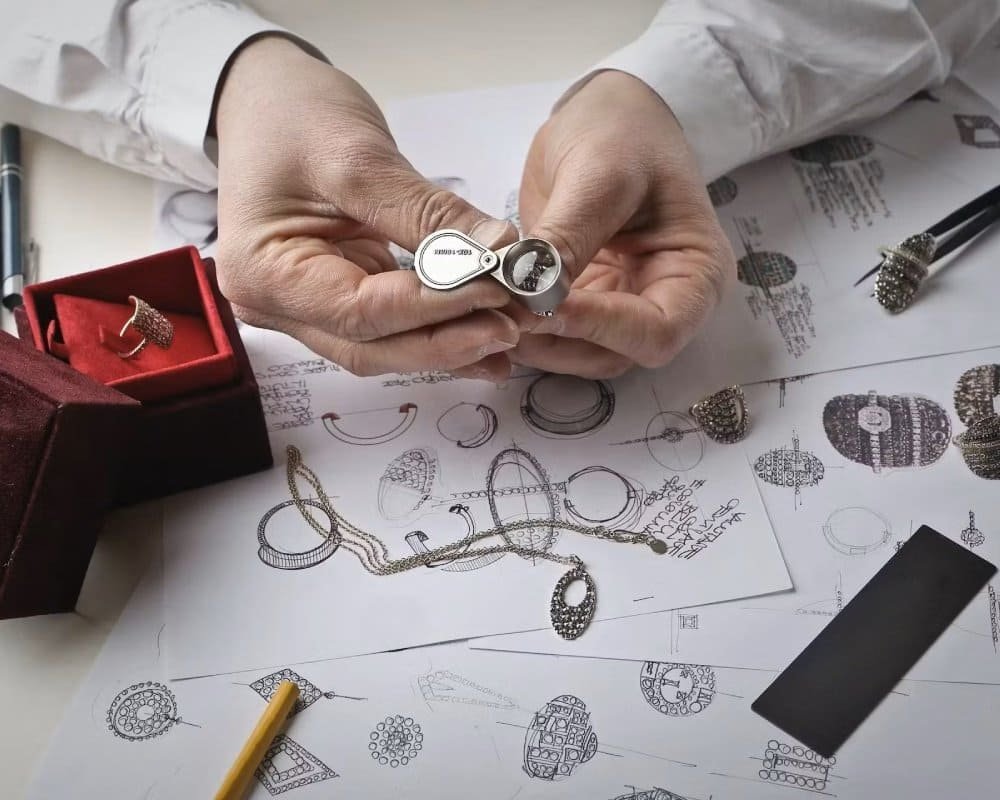
Gem selection and identification: ensure the quality of jewelry customization
Gem is the “soul” of customized jewelry, and the identification and selection process cannot be sloppy.
How to prove the origin and quality grade of gems?
Origin differences: Colombian emerald, Burmese ruby, Australian obsidian, Tanzanian tanzanite, etc.
Identification certificate: Scanned copies of the original issued by authoritative organizations such as GIA (Gemological Institute of America), IGI, HRD, SSEF, etc.
Four elements of quality grade (4C): Cut, Color, Clarity, Carat Weight.
Size measurement: ensure that the custom jewelry is comfortable to wear
Fit and comfort are the basis of daily wear, especially for rings, bracelets, necklaces and other accessories that fit closely to the body.
Measurement standards and reference methods?
Ring size: International ring size (US/UK/EU/JP, etc.) and Chinese ring size comparison table, refer to ISO 8424 standard.
Necklace length: Common lengths are 40cm (clavicle chain), 45cm (princess chain), 50cm (shoulder), 60cm (long necklace).
Bracelet tightness: It is recommended to use wrist circumference + 1–1.5cm as a comfortable margin.
Suggestions
- Purchase professional jewelry ring rulers and tape measures by yourself, and measure 3 times to take the average value.
- Pay attention to the ambient temperature when measuring (fingers shrink in cold weather and may expand slightly in hot weather).
- Take photos after measurement and send them directly to the designer or factory to reduce communication errors.
Production cycle and delivery: subject to manufacturer schedule and order details
The production cycle will vary greatly due to factory scheduling, order quantity, process complexity and selected materials. Do not use a fixed number of days as a basis.
How to define the production cycle?
Design stage: Some factories can deliver the first draft within 3-7 working days, while others may take longer.
Prototyping: The time it takes to produce a Wax model depends on the prototyping method (3D printing vs. traditional manual work). It is recommended to ask.
Manufacturing:
- The casting cycle of K gold and silver jewelry is generally slightly longer than that of brass. The specific number of days depends on the factory’s current production capacity.
- The inlay and polishing stages are more susceptible to the number and complexity of gemstones.
Quality inspection and delivery: The sampling ratio and quality inspection process of different factories are also different. It is recommended to clarify
“How long will it take to pack and ship after the quality inspection is completed? What test reports should be provided?”
Communication suggestions:
Develop a “scheduling confirmation form” – ask the supplier to give the estimated earliest/latest completion date of each stage in the contract or email, leaving a 10-15% time buffer.
| Start Your Custom Order | Email: info@fulcol.com | Number: +86 13055603907 |
Custom jewelry is not only a display of beauty and personality, but also a professional process that requires full communication and rigorous control.
Custom jewelry is a collaborative journey of art and profession. Instead of being bound by rigid processes, it is better to respond to every detail flexibly with a “continuous communication” and “demand-oriented” mentality. I wish you can advance the project honestly and orderly in every communication with Fulcol, a professional custom jewelry wholesale manufacturer, and achieve the perfect transformation of your exclusive jewelry! If you encounter any questions at any stage, please feel free to review the question list in this article, or consult with professional consultants, lawyers, and testing agencies for further consultation. Your “exclusive shine” journey officially starts from now on.
